-
Posts
981 -
Joined
-
Last visited
-
Days Won
38
Content Type
Profiles
Forums
Downloads
Gallery
Posts posted by Antoine Chalons
-
-
i can't really answer your question but I suggest you watch this presentation :
-
 1
1
-
-
Quote
2.5* price increase
Totaly justified by productivity gains brought by all the amazing new features, right?
Someone has to pay for the NXG failure I guess.-
 1
1
-
-
该文件中有四行头文件 (4 rows of header in this file)
下面是一个程序,它将读取四个标题行,然后每次读取其余的 100 行
-
 1
1
-
-
您可以按行读取文件
如果您提供文件的一小部分,我可以帮助您编写一个 vi 来逐行加载文件 -
what is the size of you images and what's the max duration you need to save for?
180FPS is not that much, you could just save images to a SSD or if needed to a RAID drive
just make put acquisition in parallel of save and pre-allocate enough buffers to store the acquired images.
in 2007 (before SSD existed) I worked on an image streaming to disk system, up to 8000fps (images were tiny and monochrome), max duration was 30 seconds, but with a ggod SSD this is nothing.
-
This bug has been fixed by NI in patch 24.3.2f2 of LabVIEW 2024 Q3
-
When you search for a LabVIEW toolkit, you should start on www.vipm.io
Take a look at this one : https://www.vipm.io/package/hse_lib_gitlab_api/if you need support HSE has a discord server, they are quite responsive.
-
 1
1
-
-
23.1 is between double quotes, which make it a string, not a numerical.
if you remove the double quotes, then is will be a numerical value.
hope this helps -
same here, I don't check the wiki every day, on average I go 2-3 times a month, I never had issues.
-
I fully agree that anything, even smoke signals in the wind, are better that NSVs.
I'm using Redis, I also started from an existing lib found on the interweb, tweaked a bit for my needs.
We now have multiple golang services as well as LabVIEW services connecting to Redis for cache and using RabbitMq for messaging.
For some small tests on my Windows machine I've used Redis on WSL, easy to use.
At the next local user group meeting I might do a short presentation about it, if you have faced any issues, I'd be interested in your feedback.
Cheers
-
 1
1
-
-
I could install it with VIPM 2022 and ZLIB Extract All Files To Dir (Path) successfully unzipped the lvappimg
edit : and same with VIPM 2017 on a different Ubuntu VM

Thank you so much for that!
-
 1
1
-
-
that would be great, if you send me 5.0.4 i can install and try
-
I see that it's not trivial to handle properly all the cases, to avoid error 8 when installing the zip package the first time, my suggestion is to edit the post install vi like I did below, quick and dirty, works for me

-
8 hours ago, Rolf Kalbermatter said:
Seems VIPM 2022 got picky about interpreting Linux as a valid platform indication for anything but 32-bit LabVIEW for Linux? That would be in fact a bug.
Does the zero-mqtt toolkit also show as disabled in the VIPM 2022 version?
Indeed, in VIPM 2022.1 zeromq doesn't even show in the list as the default config is "only show installable packages"
If I disable this, I see zeromq in the package list but can't install. Clearly a bug.
On the VIPM discord Jim said that a lot of work is being done to release a new VIPM for Linux "soon" so I'll make sure to bring this to his attention.
8 hours ago, Rolf Kalbermatter said:Error 8 is a permission error. In that Post Install VI I try to clear the write protection on the 32-bit shared library file to be able to delete it so I can copy the 64-bit DLL over it. Does the user under which you are logged in and run VIPM have admin privileges?
I guess there is no (easy) way to see the permissions of the lvzlip.so right before that Post Install VI executes.
99% of my issues on Linux are privileges issues.
- on the VM with VIPM 2017, i need sudo to launch VIPM and after installing a package I always run a `chown user:user` on the installed package ; surely there is a way to fix this but I got used to it.
- on my Linux runner VM (for CI) it's the same, VIPM 2017 with sudo needed, as I rarely change the packages, it's a tolerable pain.
- on the other VM with VIPM 2022.1 I don't need sudo.
Actually for zeromq, we have modified the package and rebuilt it, online version 3.6.2 is "Linux and Windows", the one we built is "all OS"so that's a work-around for the bug in VIPM 2022.1, set "all OS" and then you can install on Linux.
-
and VIPM 2022 fails to install zeromq with error 5000, while VIPM 2017 could install it.
-
Indeed, on Linux (Ubuntu 20 and 22) wuse use LabVIEW 2021 (therefore 64-bit)
And on Windows 10, we use LabVIEW 2021 32-bit, about 5 years ago we made that choice because of some toolkit that was 32-bit only, but now we only deploy our LabVIEW built apps NI Linux RT or in Ubuntu containers.
I don't have LabVIEW 64-bit installed on any Windows, one of my colleagues might, I'll ask around tomorrow.
one thing I didn't mention is that I was using VIPM 2022.1 on Linux
I've tried with VIPM 2017, here it looks more "friendly" :

but when trying to install 5.0.3 I get an error :

I do use zeromq Library on Linux, installed with VIPM 2017
And I've just installed opendss 1.0.0.7 semi-successfully with both VIPM 2017 and 2022 (on 2 different Ubuntu VMs).
I say semi-successfully because in both cases the multicore analysis and sparse matrix dependency failed to install with error 5000

-
if I can help in any way with testing on Linux, DM me.
-
VIPM still blocks 5.0.3

If I try to install it from the menu (File >> Open Package File(s)) I get error 5000
-
in 4.0.0 the CLFN had an absolute path to the shared lib that was like /C/Work/OpenG/....
and I couldn't find the actual so file under ~/user.lib and didn't feel like relinking all the CLFNs anyway as I knew that 4.2 would work.The size of the lvappimage I tested with is ~360 MB
-
oh, and with 4.2.0b1-1 on Windows, it works, it can successfully unzip an lvappimg.
-
VIPM 2022 keeps giving an error when trying to install version 5.0.0

I could install 4.0.0 but it seems the so file is not installed by VIPM
more recent version seem to not be supported on Linux (at least they are disable in the VIPM ring menu)

So I installed 4.2.0b1-1 found on LAVA and now I can test : no luck on Linux
-
i sure will
It does look like the unzip.vi is using a CLFN that calls functions of the LabVIEW app so it might be doing some special stuff. -
On Windows I use the NI_Unzip.lvlib:Unzip.vi to unzip normal zip files as well as lvappimg file (cRIO image file created by MAX or RAD) and it works.
On Linux NI_Unzip.lvlib:Unzip.vi can unzip normal zip files but always return error 42 when I try to unzip a lvappimg file.
I've reported this as a bug to NIAnyone knows another way to unzip a lvappimg file?
cross-posted to NI Forums -
Ok, would it take a lot of work to port it to Linux desktop or Windows?



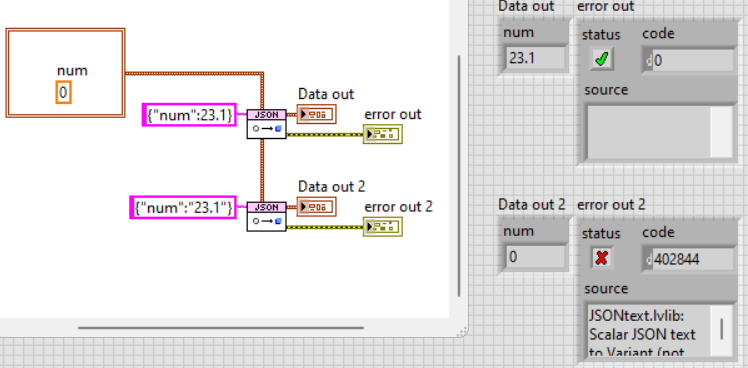
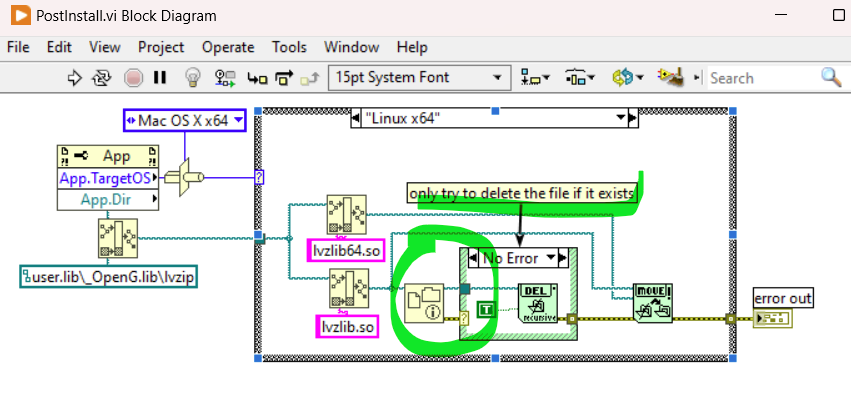
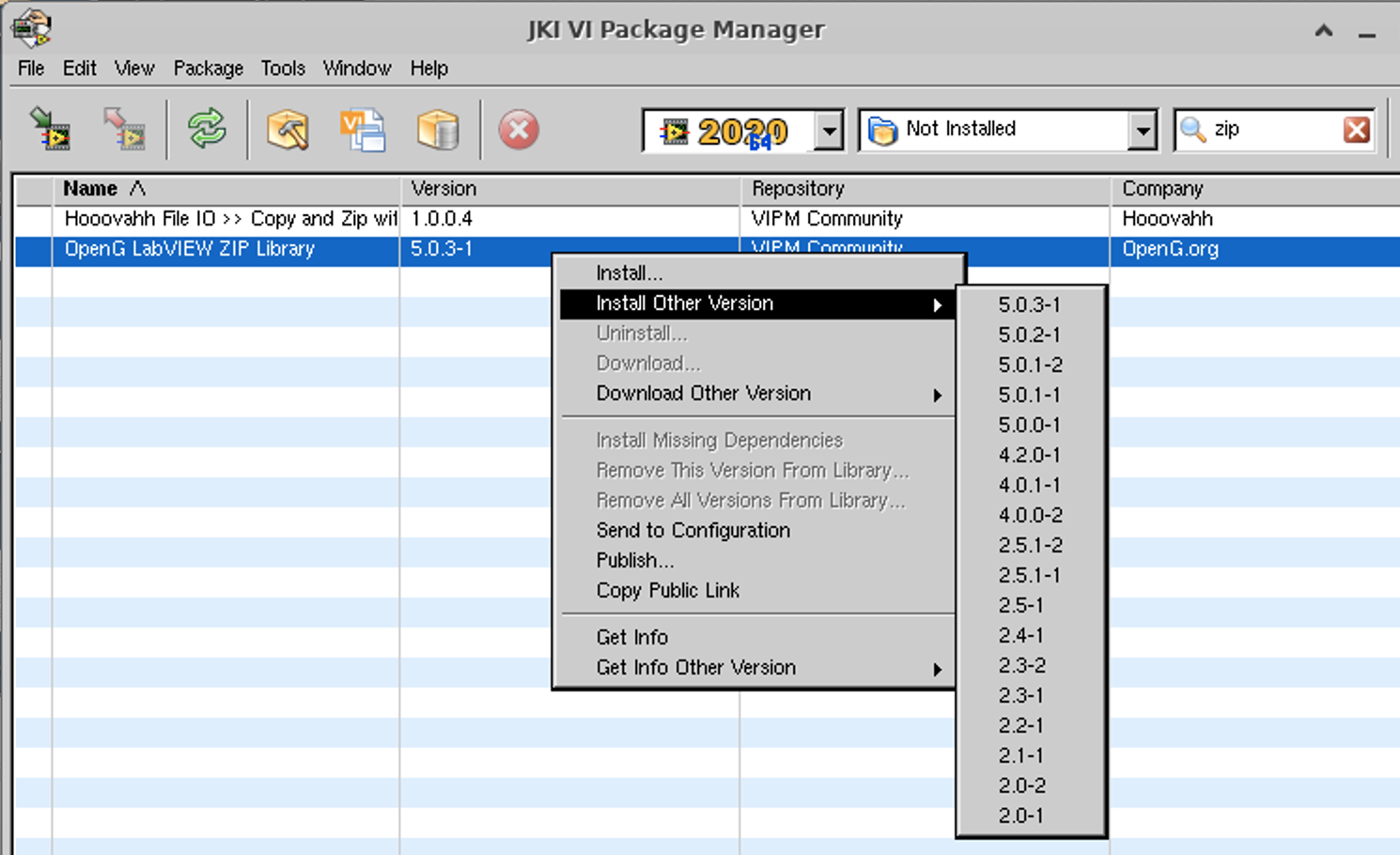
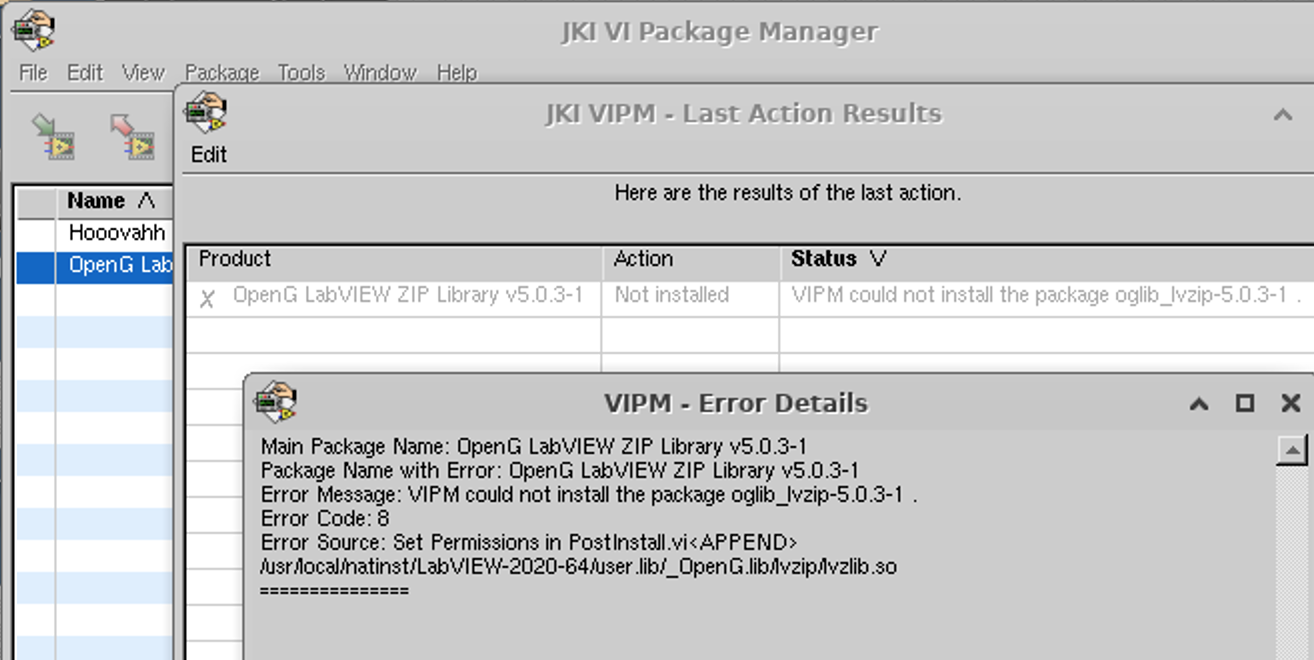
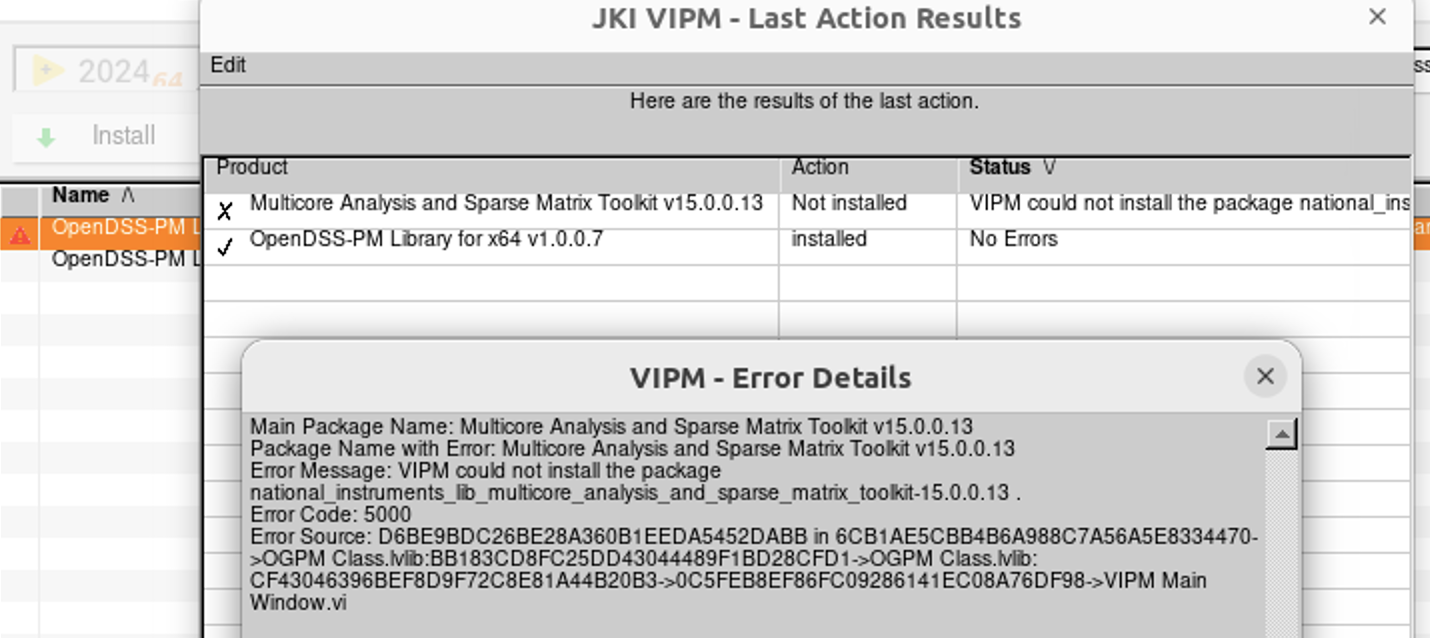
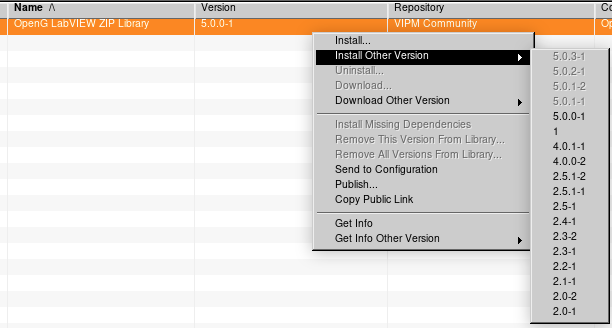
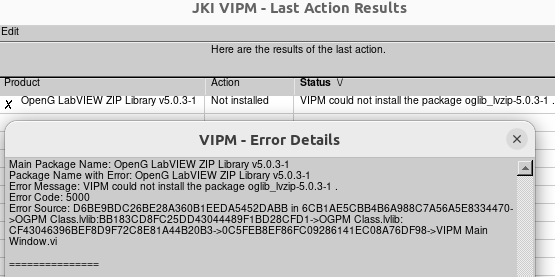

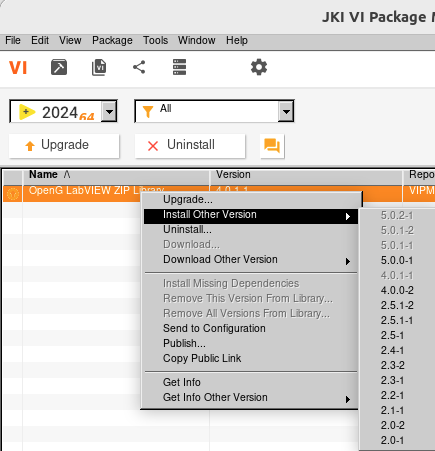
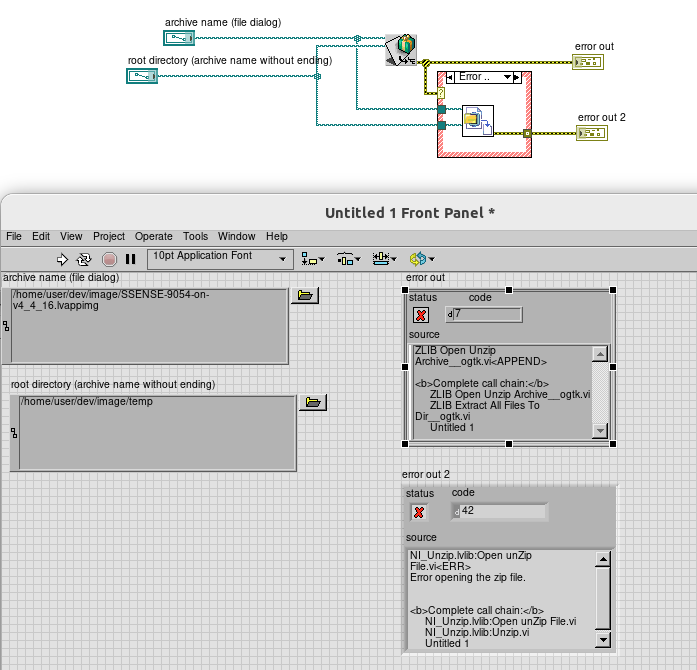
What are some choices for producer-consumer protocols?
in LabVIEW General
Posted
I would suggest rabbitmq, i want(ed) to present it at a LabVIEW user group (LUGE) but haven't done it yet.
It's very powerful.
I use redis and did a quick presentation (in french) at LUGE recently, i haven't used the stream feature though, I only used it as cache.